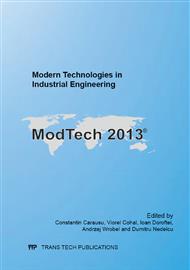p.718
p.727
p.733
p.739
p.745
p.751
p.757
p.763
p.769
Statistical Model for Ultra-Wide Band Radio Channels Onboard Ship
Abstract:
Modeling of radio wave propagation onboard ship should take into account multipath effects, i.e., reflection and scattering on the ship conductive superstructure. Novel ultra-wide band communication technology consists of series of short pulses carrying information by changing the polarity as 0 or 1 bits are transmitted. Multipath effects actually impact on the interference free time-slots to be provided between carrier pulses. Narrow-band radio channels are presently modeled either deterministic or stochastic. Although accurate, deterministic models are rather complicated and difficult to use when the configuration of the propagation channel changes. Stochastic models are less sensitive with respect to the configuration of the channel if the distribution of the scatterers and their type do not change dramatically. This paper extends the stochastic, narrow-band log-distance model to ultra-wide band channels. The coefficients of the model are calculated from a set of real data measured onboard a maritime ship. The accuracy of our model is then investigated by comparing the real channel response to the calculated one. Finally, we investigate the channel response to a usual pulse waveform, i.e. the first time-derivative of the Gauss function. The figure of merit to be analyzed is the normalized correlation coefficient or fidelity factor. It should be noted that the dispersion of the measuring antennas was compensated by knowing the gain variation as a function of frequency. This study also leads to minimal values for the time slots between pulses.
Info:
Periodical:
Pages:
745-750
Citation:
Online since:
November 2013
Authors:
Price:
Сopyright:
© 2014 Trans Tech Publications Ltd. All Rights Reserved
Share:
Citation:


